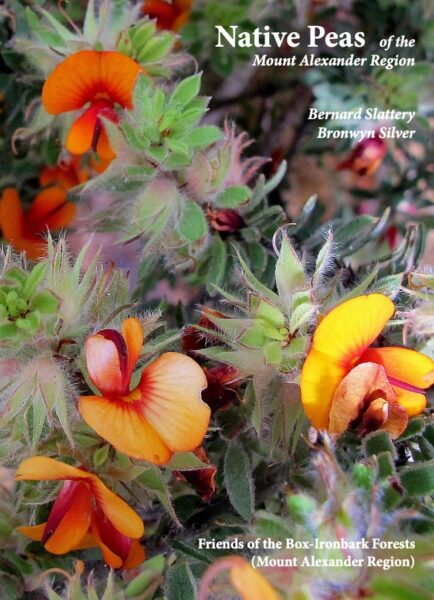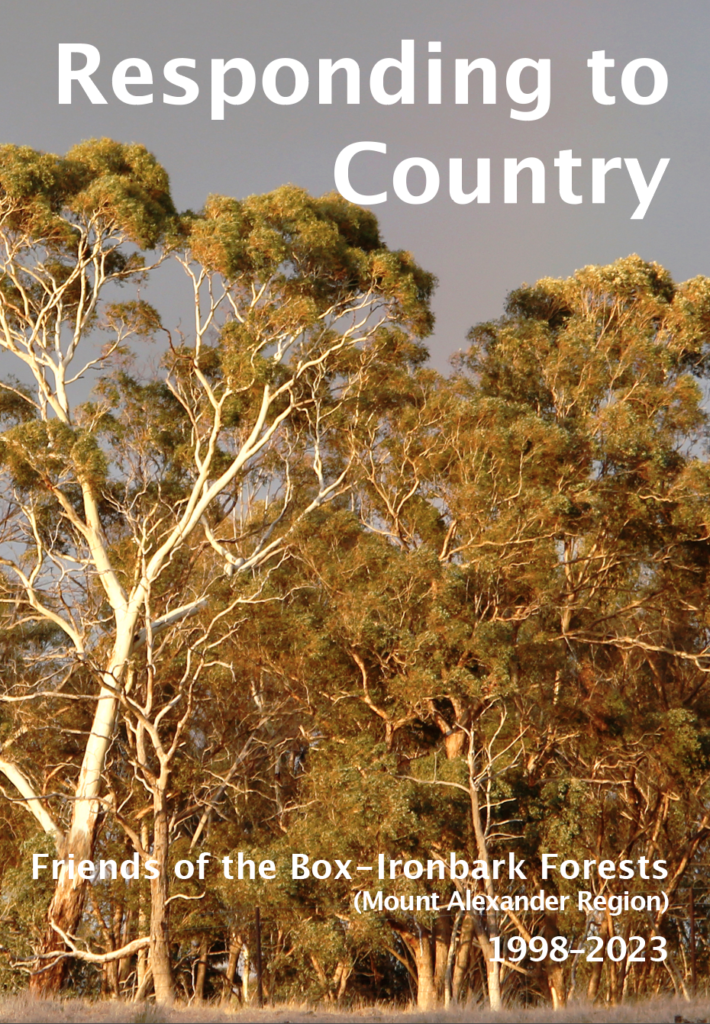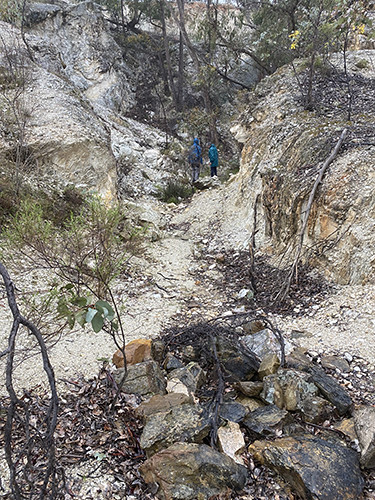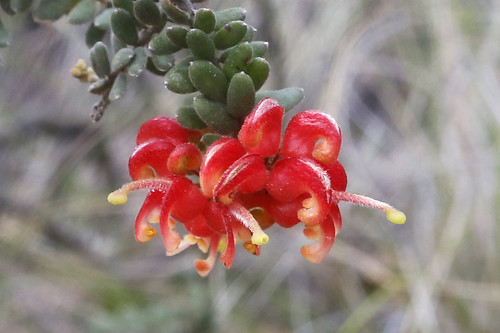Ironbarks are flowering attractively along the Pyrenees Highway between Castlemaine and Chewton, but they aren’t what we’re looking for. These beautiful trees are Eucalyptus sideroxylon, Ironbarks native to country from northern Victoria through to Queensland. We believe they were planted along the highway some years ago by Castlemaine Rotarians.

Eucalyptus tricarpa in the Muckleford Forest: a noble and characterful tree, but not an easy one to photograph
What we’re looking for are locally indigenous Ironbarks –Eucalyptus tricarpa—which are also supposed to be flowering now, but are a bit hard to find in that state…especially because we want trees with flowering branches conveniently drooping close to the ground. It’s not the flowers we’re mainly interested in, but the buds and fruits. We want to take photos of these features of the tree, to use in our ongoing project to produce a guide to local Eucalypts–and unfortunately for us, this particular tree has the noble habit of standing up very straight, making it hard for photographers to get close to its foliage.
Our Eucalypt project is aimed at producing a guide which will be accessible to absolute beginners in what can be a very confusing field. It will cover Eucalypts native to the Mount Alexander region.
FOBIF was recently pleased to receive a grant via the Norman Wettenhall Foundation to finance this project. This, together with support from Connecting Country and the Castlemaine Field Naturalists, will enable us to produce a guide which will, we hope, be helpful even to complete beginners on the subject.
Any tips? Send us an email to info@fobif.org.au As a rough indicator, local Ironbarks have cream flowers, usually in groups of three.


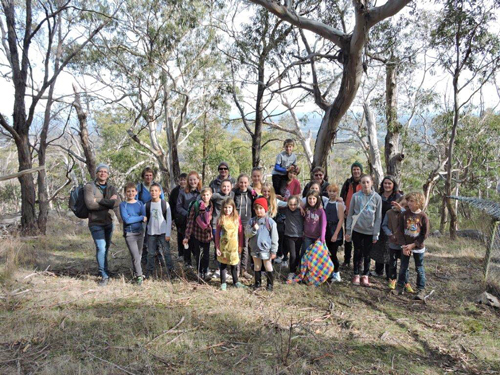
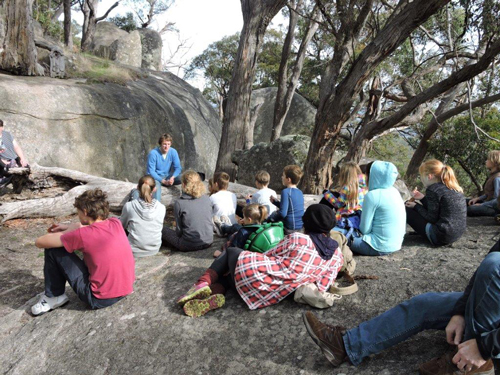

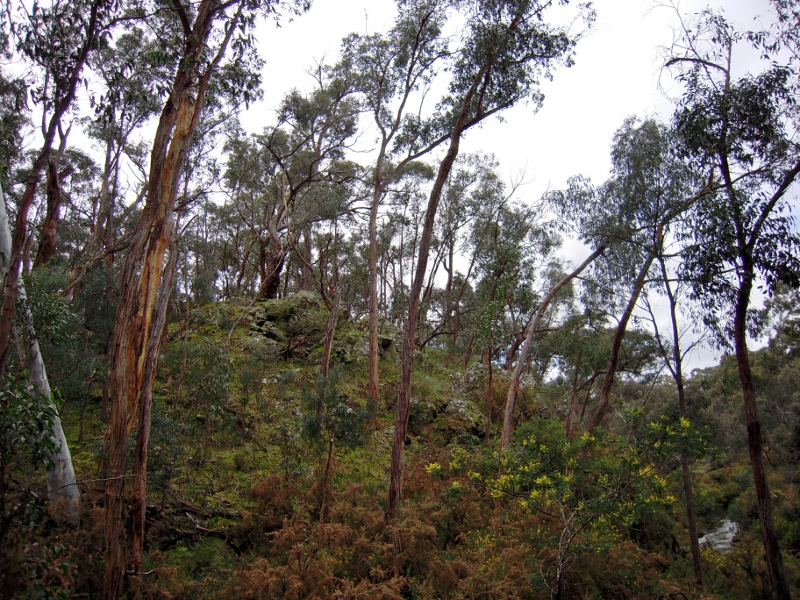
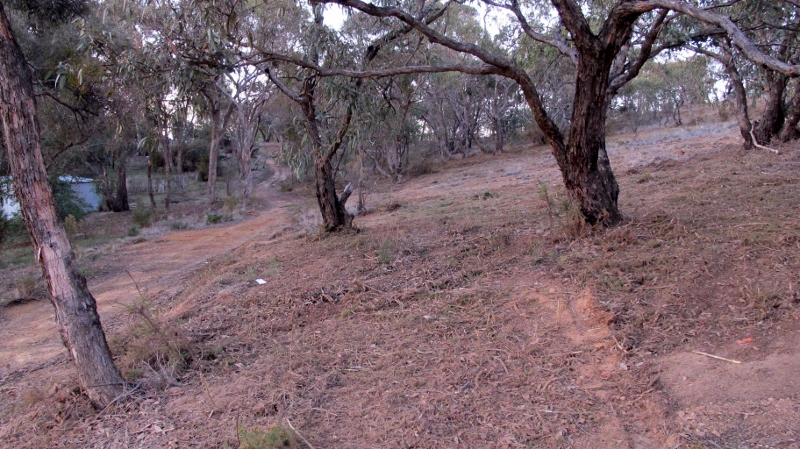

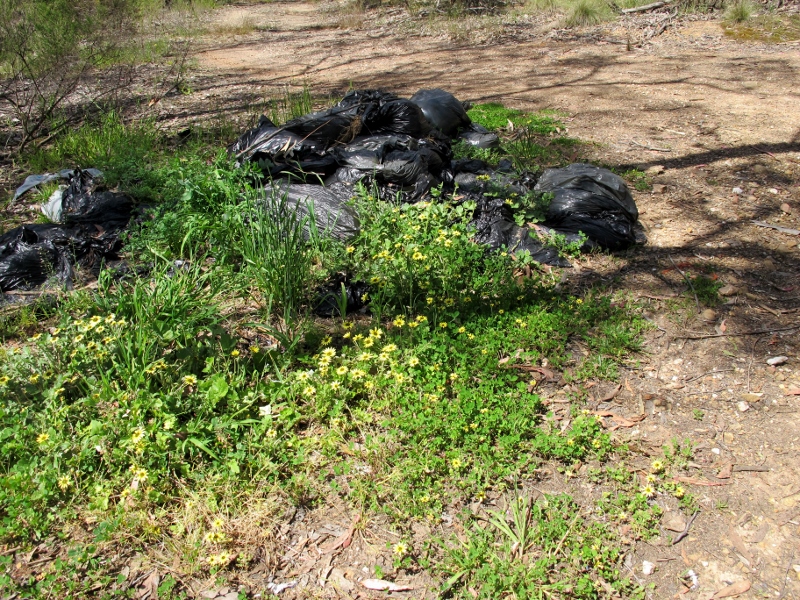

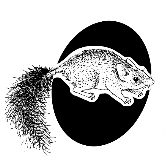

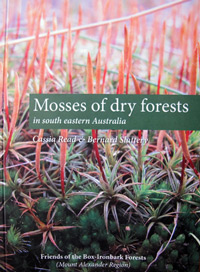 Click on image for info/order page
Click on image for info/order page Click on image for info/order page
Click on image for info/order page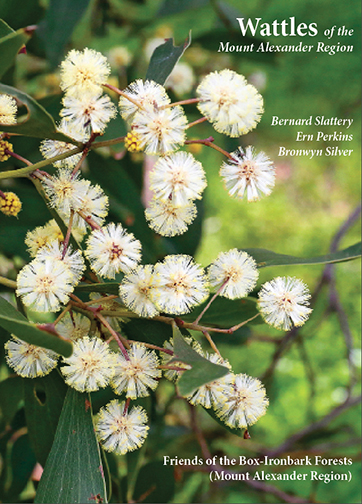 Click on image for info/order page
Click on image for info/order page